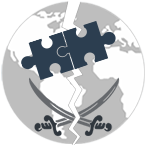A written transcript of a US public television broadcast provides yet further details of the role played by the Egyptian Muslim Brotherhood during recent protests, explaining how young Brotherhood demonstrators were instructed not to identify themselves as such to the Western media. According to the transcript of an NPR documentary titled “Inside the Muslim Brotherhood”:
On Friday, Feb. 4, as the protests picked up in size and intensity, hundreds of thousands of demonstrators were streaming into the square from all directions. To avoid violent clashes brought on by Mubarak supporters spoiling for a fight, the Muslim Brotherhood established a series of checkpoints designed to keep everything under control. The movement developed a quietly assertive role in organizing security inside the square. And it provided the muscle on the frontlines in case there were any clashes with Mubarak supporters. Mohamed Abbas, a member of the Muslim Brotherhood’s youth movement and a leader in the square who worked with secular counterparts in the early planning before Jan. 25, saw a young man flashing his pocket Koran with the Muslim Brotherhood symbol of two crossed swords before a FRONTLINE camera. Abbas gently pushed the young man’s arm down and said, “For God’s sake, don’t hold up your Koran. Hold up an Egyptian flag. For God’s sake. That’s not for the media.” Later Abbas explained the confrontation, saying in halting English, “Egyptians don’t want to make this revolution into a Muslim Brotherhood show.” He explained that he told the young brother, “Don’t show the ideology to the press because this is so bad for this revolution.” Even at this point more than half way into the revolution, the brothers saw no gain – for the country or their own movement – in allowing Mubarak to paint the surging protests as inspired by the Brotherhood. Their self-stated goal was to avoid confrontation and to execute a plan to keep the square occupied. They brought food in across the barbed wire. They strung plastic sheeting for tents. They printed huge banners depicting the martyrs who’d been killed by the police and loyal thugs of the Mubarak regime. They distributed wool blankets and set up a first aid clinic. Significantly, they also set up the first microphone and speaker tower, thus controlling the message in the square. They were doing all this without any public display that it was the Muslim Brotherhood.
An earlier post discussed another NPR written report on also providing details of the part played by the Egyptian Muslim Brotherhood during the protests.
It should be noted that the Muslim Brotherhood today has become a global network and that the Egyptian mother branch is not necessarily the most important part of the movement. Sheikh Youssef Qaradawi, close to Saudi Arabia and the Gulf states, is often referred to by the GMBDW as the most important leader of the global Muslim Brotherhood, an acknowledgement of his role as the de facto spiritual leader of the movement. In 2004, Qaradawi turned down the offer to lead the Egyptian Brotherhood after the death of the Supreme Guide.
